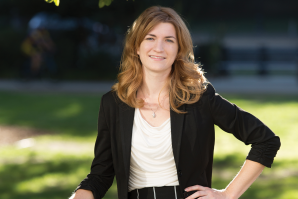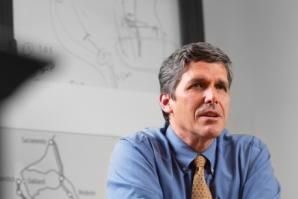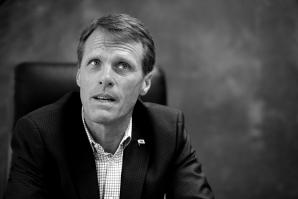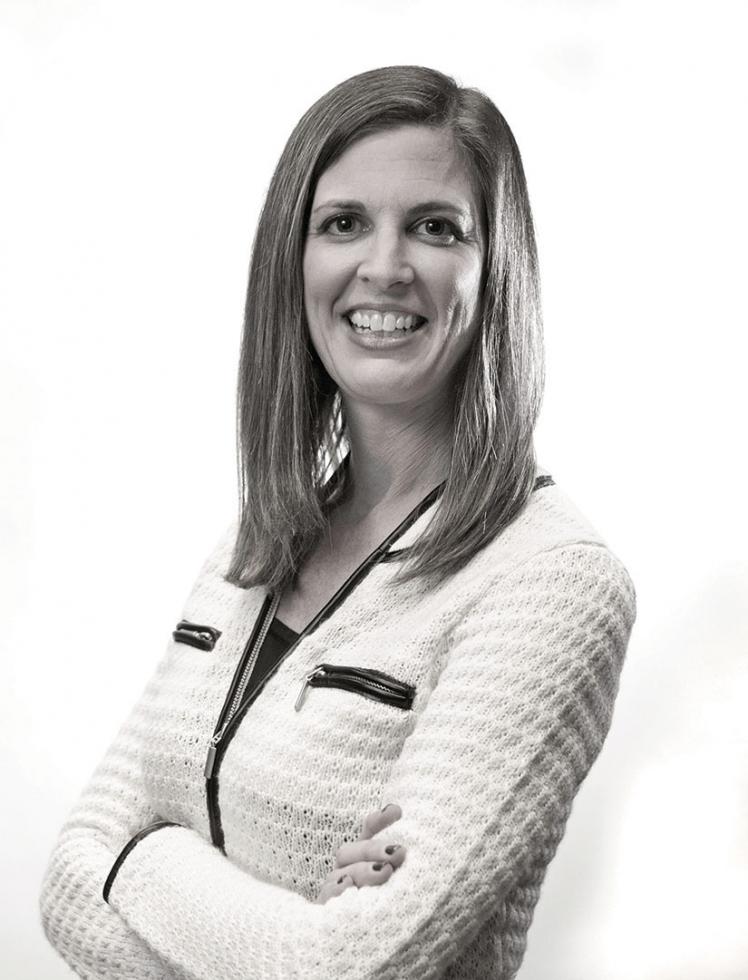Newly minted Assembly Minority Leader Kristin Olsen has developed a well-earned reputation around the Capitol as a woman on the move.
Last fall, the Modesto-native’s fellow Republicans elected her to succeed the highly respected but termed-out Connie Conway of Tulare. Just 40 years old, Olsen became one of the youngest legislative leaders in the country. We sat down with her recently to discuss her legislative priorities for this year and the future.
Your predecessor Connie Conway was in this seat for a while. For those who might not know you as well, how would you describe your leadership style?
I try to be someone that empowers all members of the caucus to use their strengths, interests and passions to make our caucus as a whole stronger. As individuals, we all have a particular focus and backgrounds, and together we can use all of our strengths to be stronger as a team. I have also always been — whether it was local government, in my everyday life as a mom or now as Republican leader for the state Assembly — somebody who firmly believes that if we’re going to complain about something we better be willing to roll up our sleeves and be part of the solution.
Give me a quick overview of your personal legislative priorities for this year and the future.
There are four areas I will focus on in my leadership role: jobs, education, transparency and the new economy. We are still struggling in many regions of this state for people to find a good, stable job, and parents are very frustrated about the lack of access to high-performing schools that will set up their children for success in the workplace and life. In regard to transparency, on my first day of the legislative session I again introduced a bill that I’ve introduced every year I’ve served in the Assembly; it would require all bills to be in print for at least three days before they’re voted on. The public has the right to be able to voice their support or opposition on all measures, and as lawmakers, we need to know what is really in a bill in order to make an educated decision. As a caucus, we’re focused on learning more about the new economy. I believe that we need to promote efforts that encourage creativity, innovation and entrepreneurship.
The GOP has long had the reputation, sometimes derisively, as the party of old, white men. But the last few elections have seen an influx of very diverse Republican women here in the Assembly. What has the party done to become more appealing to women?
I think one of the keys is that we’ve worked harder at identifying Republicans that have been serving in local offices and local communities for many years but for one reason or another didn’t take that step to run for state office. We’re working very hard to be reflective of California’s rich diversity — women for sure, but also people of various cultural and ethnic backgrounds. Our job now is to get out into communities that perhaps have traditionally been Democratic strongholds, whether that’s east L.A. or the Bay Area, and articulate the message of conservative ideals and economic growth that will restore California’s greatness. We have winning ideas, we have winning solutions. Historically we just haven’t done a great job of articulating that to people of all communities in a way that makes them feel empowered.
I can certainly see the appeal of economic empowerment to women. Women are more and more the family breadwinners, and poverty impacts them more. But strident GOP stances on social issues have often been a detriment in the party’s efforts to appeal to women. Has the party now officially moved away from that element of the platform?
I think the party has chosen to talk about the issues that people really care about. I’m a mom of three school-aged children, and the issues that really drive me are making sure my kids can access a great school, making sure that they’re healthy, making sure that they’ll have an opportunity to find a good-paying job in California. Those are the issues that unite women, regardless of party.
Transportation fuels are now included under the Assembly Bill 32 cap-and-trade program, which opponents contend will drive up gasoline and diesel fuel costs across California. You are a staunch opponent of this. There are bills in both chambers to remove fuels from cap-and-trade, but with the law already in effect how realistic is it to think that will happen?
As you said, it was imposed Jan. 1, making it that much harder to repeal. But it’s not unprecedented. Australia, which had a carbon tax program in effect for quite some time, recently repealed the program because they were seeing tremendous job loss, and it was costing the average family a thousand dollars a year. So they successfully repealed the law and are looking into other programs where they can both help their economy and improve air quality. That’s what we feel we need to do. Last year, 17 Democrats signed a letter asking the governor for the program to be repealed or at least delayed until we’d seen economic improvement. So we are reaching out again to those Democrats to identify common ground. It’s harder, certainly, this year than it was last year, but that doesn’t mean it’s not an effort worth advancing.
That said, the governor has stated his goal of California reducing fuel use by up to 50 percent, which cap-and-trade is supposed to help make happen. You would need to get a lot more than 17 Democrats to have a veto-proof majority on overturning the law. The governor has staked a big part of his legacy on this.
It’s a monumental challenge. The administration at this point has been unwilling to engage in a conversation on alternative proposals to improve the environment. But we share that same goal. One of my kids has asthma. Of course I want to have better air. Of course we want to have clean water. But we believe there are innovative ways to achieve those goals without hurting the economy. In the San Joaquin Valley, we still have double-digit unemployment. We have only 63 percent of Californians even participating in the labor market. So it’s really important that we be able to help people get out of a life of poverty, and the way to do that is not by imposing higher costs on them for goals. It’s incumbent upon us to do our research and offer alternative solutions. Republicans can’t just say, “No, no, no.” We have to offer real and viable solutions.
How far along are you in those solutions?
We are actively researching what other states and countries have been doing. We’re actively engaged in gaining more expertise, and we have dialogued with some Democrats in the legislature to see how we can work together on advancing those proposals. So for example, if they’re going to move forward and capture all this cap-and-trade revenue, how can we make sure the revenue is used on projects that will create jobs — particularly in economically distressed areas — and improve air quality, instead of being given to programs like affordable housing, which has nothing to do with improving air quality?
You’ve said roughly the same thing about high-speed rail — that you oppose it but that if it happens we need to do it right. What constitutes it being done right?
Making sure we avoid the mistakes that have been made in other infrastructure projects. I think of the Bay Bridge. That was one disaster after the other that escalated the costs of an already expensive project. If high-speed rail moves forward, and I think that’s a big if, I want to make sure Californians, particularly those in the San Joaquin Valley where the project is located, are prepared with the skills to get those jobs. So there really needs to be a strong focus at our universities and at our apprenticeship programs to make sure we’re training people in the technical needs of the project. There really needs to be a strong focus at our universities and in our apprenticeship programs to make sure we’re training people in engineering programs, the technical needs of the project.
One other thing I’ll say about high-speed rail is that it’s frustrating to many Californians that Gov. Brown is so focused on chasing this train instead of presenting a real, strategic plan that will lead to economic growth and real jobs in all parts of California. He’s now in his fifth year of his present term as governor, and we still haven’t seen a comprehensive plan for economic growth. So we think that money should be diverted to other programs, like regional transit opportunities that have a proven history of working and getting people out of their car and making it easier for them to get to work and actually improve air quality. That should be coupled with efforts led by the governor and legislature to develop a comprehensive strategic plan like others states have done to lead to economic growth and vitality.
Recommended For You

Assembly Republican Leader Kristin Olsen and ADA Reform
Lawmakers address predatory lawsuits stemming from new legislation
Almost three decades after the implementation of the federal Americans with Disabilities Act, many California companies are embroiled in lawsuits or out of business altogether. With that in mind, Assembly Republican Leader Kristin Olsen has made ADA reform a pillar of her legislative agenda.

A Message for California’s GOP
Acuity with Kaitlyn MacGregor
At 25-years-old, Kaitlyn MacGregor is the new director of communications for the California Republican Party, and she has her work cut out for her. New data from the nonpartisan Public Policy Institute of California shows that young voters aren’t registering Republican and neither are moderates, African Americans or Latinos. With elections just weeks away, MacGregor will need to make strides quickly.

The Conductor
The California High-Speed Rail Authority replaced an engineer with a political operative to lead the nation’s biggest public works project. Jeff Morales instantly charmed his opponents but made technical decisions that placed high-speed rail at the mercy of the courts. Can Morales save his runaway train?

Ted Talks
Senator Ted Gaines on Tesla, California's business climate and the future of taxes
A long-time small-business owner before entering politics, California Senator Ted Gaines has become a key figure in some of the most important political crusades facing the Sacramento region in recent years, including the battle to save the Kings and efforts to keep electric carmaker Tesla in the Golden State.



